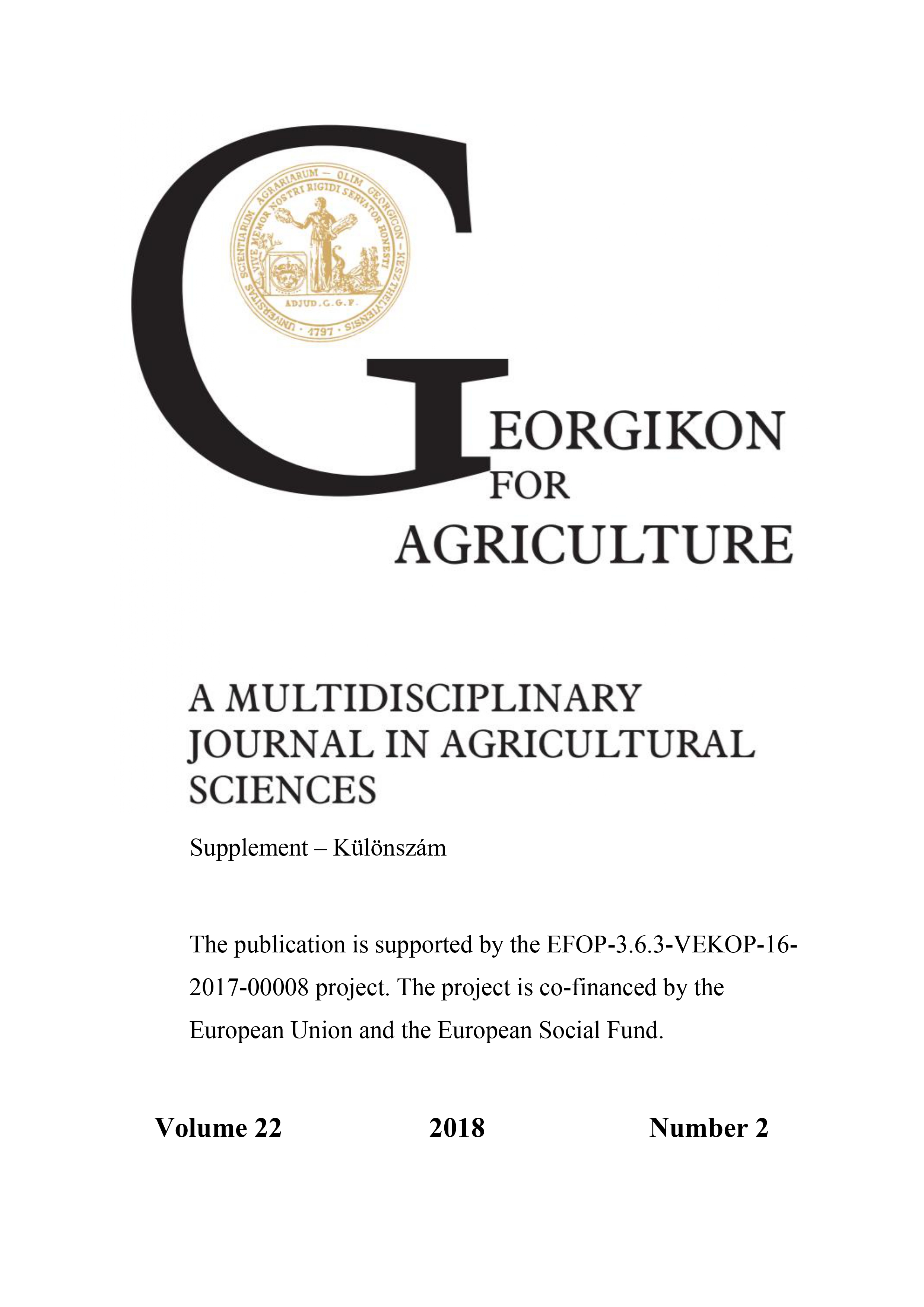Különböző eredetű árpa (Hordeum vulgare L.) fajták fenológiai és növényvédelmi megfigyelése és értékelése
Keywords:
barley, agroecological tolerance, resistance, Blumeria graminis f. sp. hordei, septoria, WHEALBIAbstract
The main objective of the College Project of WHEALBI EU7 program was to characterize the genetic diversity of old and modern barley and wheat varieties of various origins under our agroecological conditions. Five countries took part in the survey: ClermontFerrand, France; Easton & Otley College Norwich, UK; Anhalt University of Applied Science, Germany; Agrarian and Chemistry Institute Scarabelli - Ghini, Imola, Italy; and PE Georgikon Faculty, Keszthely. The aim of the project is also to develop contact between the students of the participating institutions, share information and data. The experiment was conducted with the same methodology in the participating countries. In our experiment we examined 16 barley varieties with a different origin and registration time in the 2016–2017 cropping season. We investigated the agronomically decisive properties of the varieties. We compared the results of the surveys carried out under the different agro-ecological conditions of the universities participating in the project. No plant protection intervention was performed to be able to monitor the naturally appearance of different pathogens or pests and the severity of the damage. In Keszthely, the appearance of viruses was negligible. A large number of damage caused by Pyrenophora spp., Cochliobolus sativus, Rhynchosporium secalis and barley powdery mildew (Blumeria graminis f. sp. hordei) have been observed. The intensity of their appearance was different for varieties, but barley powdery mildew was not observed on the Amilis (B2) and Tripolitaine 9598 (B16) Libyans.
References
Antal, J., Izsáki, Z., Jolánkai, M., Kajdi, F., Kismányoky, T., Kiss, J., Kruppa, J., Nagy ., Sárvári, M., Simits, K., Simonné Kiss, I., Szabó, M., Szöllősi, G., Szőcs, Z. 2005. Növénytermesztéstan 1. Mezőgazda Kiadó – Budapest
Fischl, Horváth, Kadlicskó, Kiss, Pintér, Bíró 1995. A szántóföldi növények betegségei, Mezőgazda kiadó, Budapest
Nagy, P. D., Gáborjányi, R. 1990. Az árpa csíkos mozaik vírus két különleges törzsének jellemzése. Növénytermelés. 3. 235–244.
Tomcsányi, A., Kismányoky, T. 1995. Árpatermesztési ismeretek. Regicon Kiadó.
Downloads
Published
Issue
Section
License
Copyright (c) 2018 Sólyom Iringó Boglárka, Hoffmann Borbála

This work is licensed under a Creative Commons Attribution-NonCommercial-NoDerivatives 4.0 International License.
Cikkre a Creative Commons 4.0 standard licenc alábbi típusa vonatkozik: CC-BY-NC-ND-4.0. Ennek értelmében a mű szabadon másolható, terjeszthető, bemutatható és előadható, azonban nem használható fel kereskedelmi célokra (NC), továbbá nem módosítható és nem készíthető belőle átdolgozás, származékos mű (ND). A licenc alapján a szerző vagy a jogosult által meghatározott módon fel kell tüntetni a szerző nevét és a szerzői mű címét (BY).




